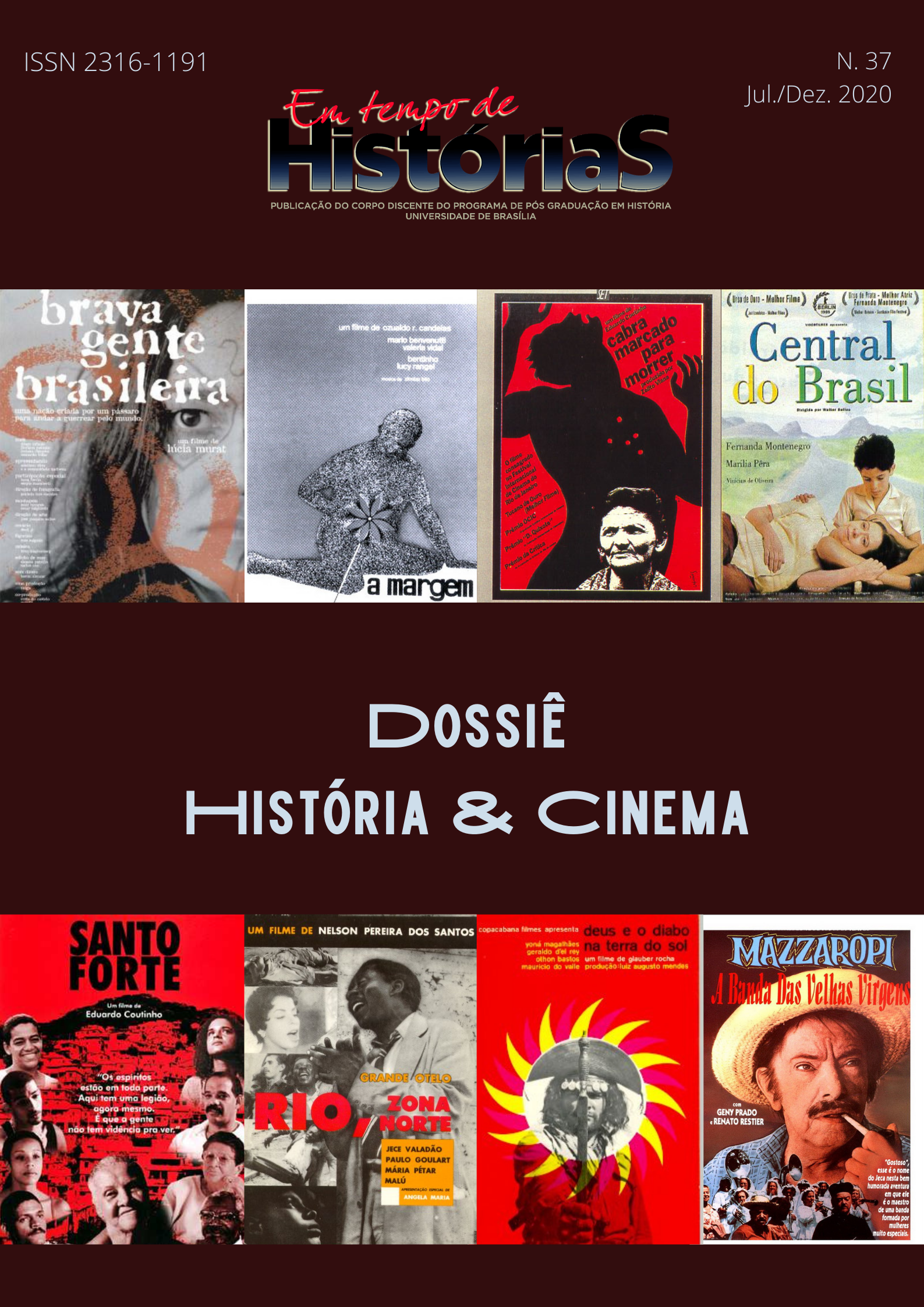“A vacuum built on a void”
East German cinema and the generational conflict over the past
DOI:
https://doi.org/10.26512/emtempos.v1i37.34135Keywords:
East Germany. Comparative Cinema. History and CinemaAbstract
This article, from the methodological perspective of comparative cinema, analyzes the relationships between parents, children and World War II, represented in two different films produced in East Germany, in 1968 and 1971. Die Russen Kommen and Karriere have as main scope the immediate post war in Germany. In both productions, we emphasize the passages in which the generational and familiar tension regarding the past is evident. This approach made possible to perceive the relationship of films with their specific context of production and, at the same time, a partial understanding of how the past, collaboration with the Nazi regime and family relationships were interpreted by East German cinema.
Downloads
References
ALBERT, Judith Clavir; ALBERT, Stewart (edt.). The Sixties Papers: Documents of a Rebellious Decade. New York: Praeger, 1984.
BROCKMANN, Stephen. A Critical History of German Film. Rochester, N.Y.: Camden House, 2010.
CIESLA, Burghard. The Russians Are Coming: A Film with Two Birthdays ”“ 1968 & 1987. The Russians Are Coming: A Film with Two Birthdays ”“ 1968 & 1987. The Russians Are Coming. A 2016 DVD Release by the DEFA Film Library (artigo presente no DVD do filme).
FEINSTEIN, Joshua. The Triumph of the Ordinary: Depictions of Daily Life in the East German Cinema, 1949”“1989. Chapel Hill, N.C: University of North Carolina, 2002.
FULBROOK, Mary. The Two Germans (1945 ”“ 1990). Studies in European History. New York: Oxford University Press, 1992.
GILLIS, J. Youth and History. Tradition and change in European age relations. 1770-present. London: Academic Press, Expanded Student Edition, 1981.
HOBSBAWM, Eric. A Era dos Extremos. O breve século XX: 1914-1991. São Paulo: Cia. Das Letras, 1995.
JARAUSCH, Konrad H. After Hitler: Recivilizing Germans, 1945””1995. New York: University Press, 2006.
JUDT, Tony. Pós-guerra: uma história da Europa desde 1945. Rio de Janeiro: Objetiva, 2011.
KLIMKE, Martin; SCHARLOT, Joachim (Eds.). 1968 in Europe: An Introduction. In: KLIMKE, Martin; SCHARLOT, Joachim (Eds.). 1968 in Europe. A History of Protest and Activism, 1956”“1977. Palgrave Macmillan. Transnational History. Basingstoke: Palgrave Macmillan, 2008.
MAZOWER. Mark. Continente sombrio: a Europa no século XX. São Paulo: Companhia das Letras, 2001.
MÜLLER, Herta. Depressões. São Paulo: Editora Globo, 2010.
SOARES, Alexandre Martins. A Imagem da Mulher no Cinema da Alemanha Oriental. Orientador: Luiz Nazario. Tese (doutorado) ”“ Universidade Federal de Minas Gerais, Escola de Belas Artes, 2017.
SORLIN, Pierre. Sociologia del Cine. México: Fondo de Cultura Economica, 1985.
SOUTO, Mariana. Infiltrados e invasores: uma perspectiva comparada sobre as relações de classe no cinema brasileiro contemporâneo. Salvador: EDUFBA, 2019.
TANNER, Jakob. Motions and Emotions In: KLIMKE, Martin; SCHARLOT, Joachim (Eds.). 1968 in Europe. A History of Protest and Activism, 1956”“1977. Palgrave Macmillan. Transnational History. Basingstoke: Palgrave Macmillan, 2008.
WOLF, Dieter. How a Banned Movie Made It to Theaters… ””and”” An Interview with Heiner Carow. The Russians Are Coming: A Film with Two Birthdays ”“ 1968 & 1987. The Russians Are Coming. A 2016 DVD Release by the DEFA Film Library (artigo presente no DVD do filme).
Downloads
Published
How to Cite
Issue
Section
License
Copyright (c) 2020 Em Tempo de Histórias

This work is licensed under a Creative Commons Attribution-NonCommercial 4.0 International License.
Autores que publicam nesta revista concordam com os seguintes termos:
- Autores mantém os direitos autorais e concedem à revista o direito de primeira publicação, sendo o trabalho simultaneamente licenciado sob a Creative Commons Attribution License , licença que permite que outros remixem, adaptem e criem a partir do seu trabalho para fins não comerciais, e embora os novos trabalhos tenham de lhe atribuir o devido crédito e não possam ser usados para fins comerciais, os usuários não têm de licenciar esses trabalhos derivados sob os mesmos termos.
- Autores têm autorização para assumir contratos adicionais separadamente, para distribuição não-exclusiva da versão do trabalho publicada nesta revista (ex.: publicar em repositório institucional ou como capítulo de livro), com reconhecimento de autoria e publicação inicial nesta revista.
- Autores têm permissão e são estimulados a publicar e distribuir seu trabalho online (ex.: em repositórios institucionais ou na sua página pessoal) a qualquer ponto antes ou durante o processo editorial, já que isso pode gerar alterações produtivas, bem como aumentar o impacto e a citação do trabalho publicado (Veja O Efeito do Acesso Livre).













